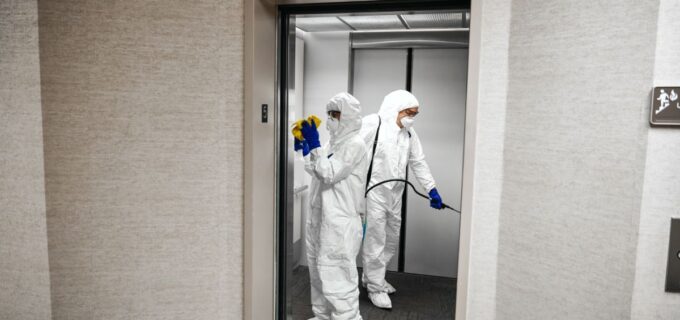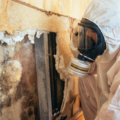
In the ever-evolving landscape of public health, the importance of disinfection services cannot be overstated. At its core, disinfection refers to the process of eliminating pathogenic microorganisms from surfaces and environments, thereby reducing the risk of infection transmission. This service plays a pivotal role in controlling outbreaks of infectious diseases, safeguarding public health, and maintaining a clean, safe environment for communities and businesses alike.
The emergence of global pandemics and localized outbreaks has underscored the necessity for effective disinfection services. From the rapid spread of the Severe Acute Respiratory Syndrome (SARS) in the early 2000s to the unprecedented challenges posed by the COVID-19 pandemic, the need for robust and responsive disinfection protocols has never been more apparent. Similarly, outbreaks of Hand, Foot, and Mouth Disease (HFMD) and the recent concerns surrounding Monkey Pox highlight the diverse range of pathogens that necessitate varied disinfection strategies.
Disinfection services, however, are not a one-size-fits-all solution. Each pathogen presents unique challenges in terms of its transmission, survival on surfaces, and susceptibility to disinfectants. Therefore, it is crucial that disinfection protocols are tailored to effectively combat specific pathogens. For instance, while SARS and COVID-19 are caused by coronaviruses, requiring specific attention to airborne transmission and high-touch surfaces, diseases like HFMD and Monkey Pox demand a different approach given their modes of transmission and environmental persistence.

The adaptability of disinfection services in response to SARS involved enhanced measures to clean and disinfect surfaces in healthcare settings, considering the high potential for airborne transmission. As the world grappled with COVID-19, the scope of disinfection expanded exponentially. It necessitated frequent and thorough cleaning of public spaces, workplaces, and homes, focusing on high-touch areas like doorknobs, elevator buttons, and handrails. The use of electrostatic sprayers and ultraviolet light became more prevalent, offering comprehensive coverage and reducing the risk of viral spread.
In contrast, tackling outbreaks like HFMD, common in childcare settings, required a focus on disinfecting toys, play areas, and frequently touched surfaces, as the virus often spreads through direct contact and contaminated objects. The response to Monkey Pox, similarly, demands specialized attention due to its different transmission dynamics, necessitating targeted disinfection practices in potentially affected areas.
The effectiveness of these tailored disinfection services hinges on several key factors. The choice of disinfectants is paramount, with a need for products that are not only effective against the specific pathogen but also safe for use in varied environments. Equally important is the method of application, ensuring that all potentially contaminated surfaces are adequately treated without causing harm to individuals or the environment.
Training and expertise of the personnel performing these services are also critical. Professionals equipped with knowledge about different pathogens, appropriate disinfection techniques, and safety measures can ensure that the disinfection process is thorough, effective, and safe. This expertise is vital in instilling confidence among the public, especially in times of heightened health concerns.
In conclusion, disinfection services play an indispensable role in controlling the spread of infectious diseases. Their ability to adapt to the unique challenges posed by different outbreaks like SARS, COVID-19, HFMD, and Monkey Pox not only demonstrates the complexity of this field but also underscores the importance of specialized knowledge and practices in safeguarding public health. As we continue to navigate the challenges of various health crises, the role of tailored disinfection services will remain a cornerstone in our collective effort to maintain a safe and healthy society.
Understanding Viral Outbreaks: Types and Spread Mechanisms

Viral outbreaks, ranging from SARS to COVID-19, have posed significant challenges to global health. Each outbreak is characterized by its unique nature and transmission methods, necessitating specific public health responses.
Severe Acute Respiratory Syndrome (SARS), which emerged in 2003, was caused by a coronavirus transmitted primarily through respiratory droplets. Its spread was facilitated in densely populated areas and healthcare settings, making isolation and quarantine critical in containing it. SARS highlighted the need for rapid response mechanisms and international cooperation in outbreak management.
COVID-19, caused by the novel coronavirus SARS-CoV-2, surfaced in 2019 and quickly escalated into a global pandemic. Its highly contagious nature, coupled with asymptomatic spread, presented unprecedented challenges. COVID-19 spreads primarily through respiratory droplets and aerosols, necessitating widespread mask usage, social distancing, and rigorous sanitation measures. The virus’s ability to mutate led to various strains, each with distinct characteristics, further complicating containment efforts.
Other notable outbreaks include Hand, Foot, and Mouth Disease (HFMD), mainly affecting children. This virus spreads through direct contact with infected persons or surfaces contaminated with the virus. Controlling HFMD outbreaks often requires stringent hygiene practices in childcare and educational settings.
Monkey Pox, another viral outbreak, is transmitted through close contact with infected animals or humans, or with materials contaminated with the virus. While less contagious than diseases like COVID-19, Monkey Pox poses unique challenges due to its longer incubation period and the need for specific medical and isolation protocols.
Each of these outbreaks demonstrates the complex nature of viral transmissions. The spread mechanisms, whether through respiratory droplets, direct contact, or contaminated surfaces, pose distinct challenges in containment. This complexity underscores the need for adaptable public health strategies, including targeted disinfection services, to effectively manage and mitigate the impacts of viral outbreaks. Understanding these dynamics is key to developing effective prevention and control measures, ensuring public safety and health in the face of evolving viral threats.
The Role of Disinfection in Containment and Prevention of Outbreaks

Disinfection plays a crucial role in controlling and preventing the spread of infectious diseases. By effectively eliminating pathogens from surfaces and environments, it acts as a frontline defense against various outbreaks, contributing significantly to public health and safety.
Containment of Outbreaks: In the event of an outbreak, rapid and thorough disinfection is key to containment. For respiratory viruses like SARS and COVID-19, disinfecting frequently touched surfaces and communal areas can significantly reduce the viral load, minimizing the risk of transmission. In healthcare settings, disinfection is indispensable in preventing the spread of infections among patients and healthcare workers. Similarly, in the case of HFMD, disinfecting toys, play areas, and commonly touched surfaces in childcare facilities can greatly reduce the spread among children.
Prevention of Future Outbreaks: Routine and strategic disinfection plays a preventative role. By maintaining high standards of cleanliness and hygiene in public spaces, workplaces, and homes, it helps in preemptively reducing the likelihood of pathogen spread. This is particularly important in environments prone to high human traffic or where vulnerable populations, such as the elderly and the immunocompromised, are present.
Importance in Public Health: The broader public health benefits of disinfection cannot be overstated. Beyond controlling specific outbreaks, regular disinfection practices contribute to overall public health by maintaining environments free from a range of pathogens, including bacteria and fungi. This is crucial in preventing secondary infections and maintaining a healthy community.
Disinfection also plays a psychological role in public health. Visible disinfection efforts can reassure the public, instilling a sense of safety and normalcy, especially during times of heightened health concerns. This psychological reassurance is vital in maintaining social and economic stability during and after outbreaks.
Big Red’s Disinfection Process

Building on the significance of disinfection in public health, Big Red’s disinfection process stands out for its meticulous approach, incorporating safety protocols, innovative techniques, and a commitment to quality assurance.
Safety Protocols: At the forefront of Big Red’s process is the strict adherence to safety protocols. Recognizing the risks involved in handling and applying disinfectants, Big Red ensures that all personnel are equipped with the proper personal protective equipment (PPE). This includes gloves, masks, and protective clothing, essential in safeguarding the health of the technicians and preventing any secondary contamination. Furthermore, Big Red utilizes Environmental Protection Agency (EPA)-approved disinfectants, ensuring that all materials used are not only effective against a wide range of pathogens but also safe for use in various environments. This careful selection of disinfectants is vital in ensuring the safety and health of both the public and the environment.
Innovative Techniques: Big Red distinguishes itself through the use of advanced non-leaching anti-microbial technology. This innovation is crucial in the prevention of future cross-contamination. Unlike traditional disinfectants that offer momentary protection, non-leaching anti-microbials provide a lasting barrier against pathogens, effectively reducing the risk of future outbreaks and ensuring long-term safety and cleanliness.
Quality Assurance: The hallmark of Big Red’s services is its commitment to quality. Every step of the disinfection process is carried out with thoroughness and precision. Regular training ensures that the team is up-to-date with the latest disinfection techniques and safety standards. This meticulous approach is underpinned by a robust quality assurance program, ensuring that every disinfection job meets the highest standards of effectiveness and safety.
In sum, Big Red’s disinfection process, characterized by stringent safety protocols, innovative techniques, and unwavering commitment to quality, sets a benchmark in the industry. It not only addresses the immediate needs of outbreak containment and prevention but also contributes significantly to the long-term health and safety of the community.
Case Studies: Singapore’s Experience
Case Study 1: SARS Outbreak in 2003

Situation: In 2003, Singapore faced the severe acute respiratory syndrome (SARS) outbreak. The virus, known for its rapid respiratory transmission, led to numerous infections within healthcare facilities and community spaces.
Big Red’s Role: Big Red swiftly implemented an extensive disinfection protocol in affected hospitals and public areas. Utilizing EPA-approved disinfectants, they focused on high-touch surfaces and air filtration systems. Their response included training hospital staff on proper disinfection techniques and PPE usage, significantly reducing cross-infection rates within these facilities.
Outcome: The proactive measures taken by Big Red contributed to the containment of the SARS outbreak in Singapore. Their rigorous approach and adherence to safety protocols were instrumental in restoring public confidence and normalcy.
Case Study 2: COVID-19 Pandemic Response

Situation: The COVID-19 pandemic presented an unprecedented challenge with its high transmissibility. Public spaces, residential areas, and business premises were all potential hotspots for virus spread.
Big Red’s Role: Big Red adapted their disinfection strategy to combat the novel coronavirus. They deployed specialized teams for widespread disinfection of public areas, transport hubs, and commercial buildings. Innovative techniques like electrostatic spraying and the use of non-leaching antimicrobials provided long-term protection against the virus.
Outcome: Big Red’s comprehensive and innovative disinfection approach played a key role in controlling the spread of COVID-19 in Singapore. Their efforts helped maintain essential services and supported the gradual reopening of the economy.
Case Study 3: Hand, Foot, and Mouth Disease (HFMD) in Childcare Centers

Situation: Periodic outbreaks of HFMD, particularly in childcare centers, posed a significant health risk to young children in Singapore.
Big Red’s Role: Recognizing the unique challenges of HFMD, Big Red implemented targeted disinfection protocols in affected childcare centers. They focused on sanitizing toys, play areas, and frequently touched surfaces using child-safe, EPA-approved disinfectants. Their team also conducted educational sessions for childcare staff on maintaining hygiene and preventing future outbreaks.
Outcome: Big Red’s targeted approach effectively reduced the incidence of HFMD in childcare settings. By focusing on critical contact points and educating staff, they helped create safer environments for children and reduced the burden on healthcare facilities.
Safety in Disinfection Services
Building on the success illustrated in the case studies, the safety in Big Red’s disinfection services is rooted in stringent protocols and standards, coupled with the expertise of its personnel.
Safety Protocols and Standards: Big Red adheres to rigorous safety measures throughout the disinfection process. This includes the use of EPA-approved, environmentally friendly disinfectants and adherence to national health and safety guidelines. Regular audits ensure compliance with evolving safety standards, ensuring that each disinfection task is performed with utmost precision and care.
Staff Training and Expertise: The effectiveness of Big Red’s services is amplified by its team of highly trained professionals. Staff undergo continuous training in handling hazardous materials and are well-versed in the latest disinfection techniques. Their expertise in managing complex situations, from large-scale outbreaks to routine disinfections, is a testament to Big Red’s commitment to safety and excellence in service.
The Emergence of Non-Expert Disinfection Companies
Following the precedent set by Big Red’s meticulous safety standards, the post-COVID era witnessed a surge in non-expert companies, like pest control and air-conditioning services, venturing into the realm of disinfection. This trend, while indicative of the heightened demand for cleanliness, raises concerns about the efficacy and safety of services provided by entities lacking specialized expertise in disinfection.
Risks of Non-Expertise: Engaging with these non-specialist companies can pose significant risks. Inadequate knowledge of proper disinfection protocols, incorrect use of chemicals, and insufficient safety measures can not only lead to ineffective disinfection but also pose health hazards to the public. This underscores the importance of relying on established, expert companies like Big Red, whose dedicated training and adherence to safety standards ensure reliable and safe disinfection services.
Why Choose Big Red?

In the landscape populated by non-expert disinfection companies, choosing Big Red stands as a decision for unparalleled expertise and trust. Big Red’s long-standing presence in the field is backed by a deep understanding of disinfectionprocesses, adherence to safety protocols, and a commitment to using EPA-approved, eco-friendly disinfectants. Their team of professionals is not only well-trained but also stays abreast of the latest developments in disinfection technology and public health guidelines.
Client Testimonials: The reliability of Big Red is echoed in the positive feedback from their diverse clientele. One hospital administrator noted, “Big Red’s response to our urgent needs during the COVID-19 crisis was exemplary. Their team’s professionalism and effectiveness in disinfection helped us maintain a safe environment for our patients and staff.” A school principal mentioned, “Thanks to Big Red’s expertise, we confidently navigated the HFMD outbreak with minimal disruption.”
These testimonials highlight Big Red’s ability to deliver high-quality services tailored to the unique needs of each client, reinforcing why they are the go-to choice for expert, reliable, and safe disinfection services in a market crowded with less experienced providers.
Best Practices Post-Disinfection
Following a thorough disinfection service by Big Red, adopting best practices for post-disinfection maintenance is crucial in sustaining a hygienic environment and prolonging the effects of the service.
Maintenance Guidelines: Post-disinfection, regular cleaning should continue to be a priority. This includes routine wiping of high-touch surfaces such as doorknobs, light switches, and countertops with appropriate cleaning agents. It’s also important to maintain good ventilation in indoor spaces and encourage hand hygiene among occupants. Businesses and institutions should consider implementing a schedule for regular professional disinfection as part of their ongoing maintenance routine, especially in high-traffic areas.
Preventive Measures with Non-Leaching Antimicrobials: Big Red’s use of non-leaching antimicrobials in their disinfection process offers long-term protection against pathogens. These antimicrobials create a surface barrier that continuously neutralizes germs without the risk of them developing resistance. To complement this, it is advisable to integrate these antimicrobials into regular cleaning products used in homes, offices, and public spaces. This not only helps in extending the efficacy of the initial disinfection but also provides an additional layer of protection against future contamination.
By adhering to these maintenance guidelines and leveraging the benefits of non-leaching antimicrobials, individuals and organizations can significantly reduce the risk of future outbreaks, maintaining a healthier and safer environment for all.
In conclusion, Big Red’s expertise in tailored disinfection services, adherence to safety protocols, and innovative use of non-leaching antimicrobials set it apart in managing diverse viral outbreaks in Singapore. Their commitment to quality assurance and client satisfaction is evident. Choose Big Red for reliable, expert disinfection services to ensure a safe, hygienic environment for your community or business.




